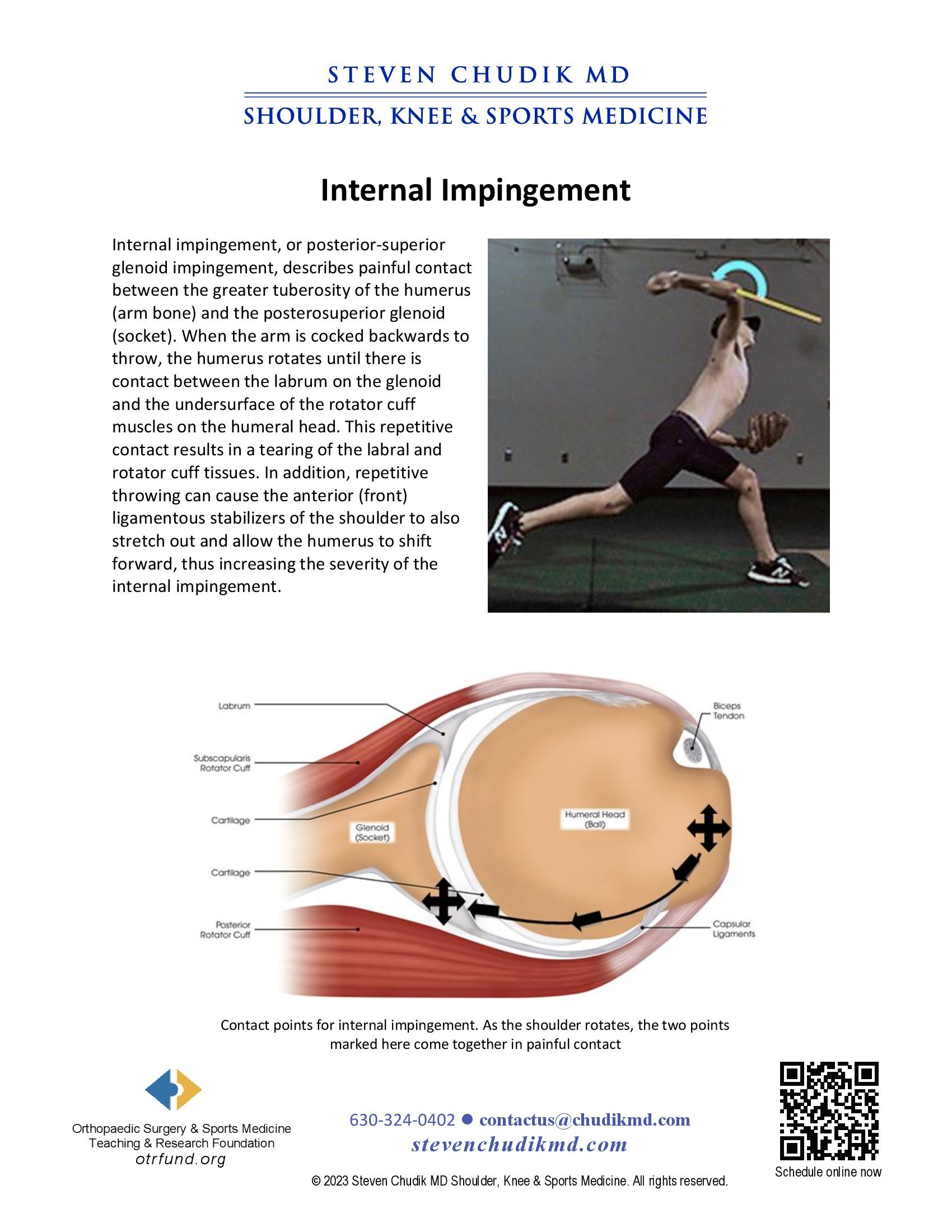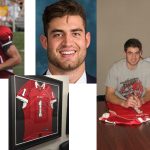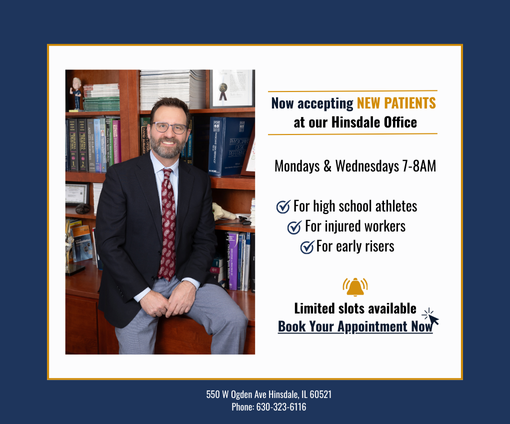Internal impingement, or posterior-superior glenoid impingement, describes painful contact between the greater tuberosity of the humerus (arm bone) and the posterosuperior glenoid (socket). When the arm is cocked backwards to throw, the humerus rotates until there is contact between the labrum on the glenoid and the undersurface of the rotator cuff muscles on the humeral head. This repetitive contact results in a tearing of the labral and rotator cuff tissues. In addition, repetitive throwing can cause the anterior (front) ligamentous stabilizers of the shoulder to also stretch out and allow the humerus to shift forward, thus increasing the severity of the internal impingement
Painful internal impingement without tears of the labrum or rotator cuff may improve with conservative treatment consisting of avoidance of aggravating activities, rehabilitation exercises, correction of throwing mechanics and gradual return to overhead activities. Internal impingement with labral and/or rotator cuff tears often require arthroscopic surgery to repair tears and address loose ligaments in the front of the shoulder to alleviate symptoms.
Learn More
 “Dr. Chudik, Thanks for helping me keep my dream alive.”
“Dr. Chudik, Thanks for helping me keep my dream alive.”
Dr Steven Chudik founded OTRF in 2007 to keep people active and healthy through unbiased education and research. Click to learn about OTRF’s free programs, educational opportunities and ways to participate with the nonprofit foundation.
1010 Executive Ct, Suite 250
Westmont, Illinois 60559
Phone: 630-324-0402
Fax: 630-920-2382
(New Patients)
550 W Ogden Ave
Hinsdale, IL 60521
Phone: 630-323-6116
Fax: 630-920-2382
4700 Gilbert Ave, Suite 51
Western Springs, Illinois 60558
Phone: 630-324-0402
Fax: 630-920-2382

© 2025 © 2019 Copyright Steven Chudik MD, All Rights Reserved.

